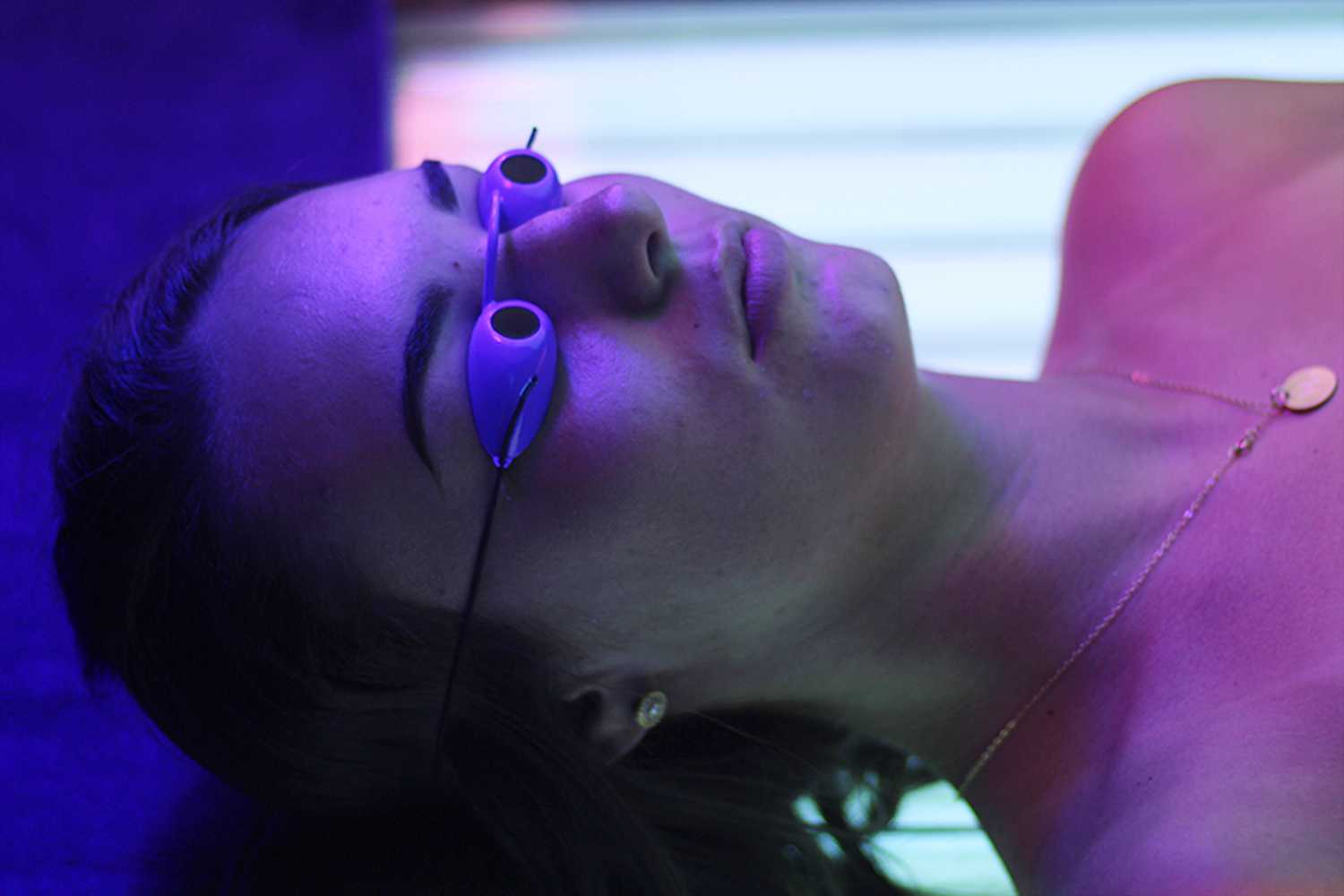Blinded by the light
44 percent of students think people look "somewhat better" after tanning. However, the overwhelming majority of melanoma cases for 18-29 year-olds are caused by tanning beds.
May 13, 2015
Junior Alice Cumptson takes off her goggles as she exits the tanning bed. Glancing down, she sees her skin isn’t all that tan. Cumpston isn’t discouraged, however, knowing that in order to make a noticeable difference she needs to visit the salon roughly 3-4 more times.
According to the Skin Cancer Foundation, visits like Cumpston’s can pose risk of cancer. Tanning beds were the cause of 76 percent of cases of melanoma, a serious kind of skin cancer, in 18-29 year olds in 2010.
Registrar Sue Cathell is familiar with the effects of tanning. As a teenager, she “was out in the sun all the time, [and] didn’t know about sunscreen.”
When she was 34 years old, she turned to tanning beds.
“[My husband] died in February [1996] and then that spring and summer I had this intense need to look healthy because we had spent so much time in the hospital,” Cathell said. “So, I tanned in a tanning bed and that summer at the pool I was out [in the sun]. I was very, very dark.”
She received a phone call years later declaring that she had malignant melanoma, a result of her tanning.
“When you get that call, ‘Oh it was malignant melanoma and it was deep enough that it could spread and kill you,’ your heart drops. It’s like, I did this to myself […]” Cathell said.
“More than one million Americans use tanning salons,” according to the Skin Cancer Foundation.
Some of those million are in JC. Cumptson, who only visits the tanning bed for school dances, hits up level two.
“Level two is where you don’t have to go in as long because it has stronger lights,” Cumpston said.
Cumpston started using tanning beds a year ago, and is aware of the risks of tanning, but “[she] just [doesn’t] think that just going for two weeks [out of a year] is going to make much of a difference when there are plenty of people susceptible to the same risks just going outside and tanning or not even tanning at all.”
Cumpston isn’t the only student who tans with a tanning bed. Of 59 respondents in a survey conducted by The Patriot with nine percent indicated that they use tanning beds.
Senior Annelise Lang once used them, but no longer participates.
“I felt kind of weird doing it,” Lang said. “A lot of the people that go there are old and wrinkly, and that made me not want to go anymore.”
Additionally, about 44 percent of students stated they believe that people look “somewhat better” after tanning.
Sophomore Payton Taylor tans as well, although she says she is aware of the risks. “Tanning is fine, as long as you don’t do it too often and don’t go for a long amount of time,” Taylor said. “Spray tanning is bad [though], it makes you orange.”
Contrary to popular belief, “spray tanning may be just as dangerous as every other form of tanning, but for different reasons,” according to the Baseline for Health Foundation.
A chemical called DHA that is in the tanning spray can be absorbed by multiple layers of the skin. Even if DHA isn’t inhaled when the spray is applied, the chemical can reach in the deeper layers of skin and cause damage. That danger is a mutation of cells that can lead to cancer.
Senior Brady Fritz experienced a different negative of spray tanning when he got one for JC’s production of Aladdin in 2012.
“It was horrendous. It looked good at first, [but] it was kind of sticky and gross. As I [showered], it kept coming off and it looked like I had a skin disease,” Fritz said. “I was told I didn’t exfoliate, but I’m a guy so I don’t know what to do before a spray tan.”
Unfortunately, the sun isn’t a safe way to get that glow either. According to the Skin Cancer Foundation, “about 90 percent of non-melanoma skin cancers and 65 percent of melanomas are associated with exposure to UV radiation from the sun.”
However, despite its popularity, there are still students who don’t support tanning.
“People don’t need to tan because they already look so beautiful,” junior Carly Lyon said.
While Cathell doesn’t condone tanning, she understands that “in the end, it’s everybody’s choice.”
“I appreciate teenagers and young adults who think that they’re invincible and that it won’t happen to them,” Cathell said. “Because I thought that. Even at 34 years old […].”
Junior Evan Moore doesn’t understand why girls tan even though they know about the risks. “Why would you want to do that to yourself just to look more ‘attractive,’ by being tan?” Moore said. “Is it really worth it?”
Elizabeth Driver is a Copy Editor for The Patriot and jcpatriot.com

